Populus by Studio Gang, the ‘first carbon positive hotel in the US’ takes root in Denver
Populus by Studio Gang opens in Denver, offering a hotel with a distinctive, organic façade and strong sustainability credentials
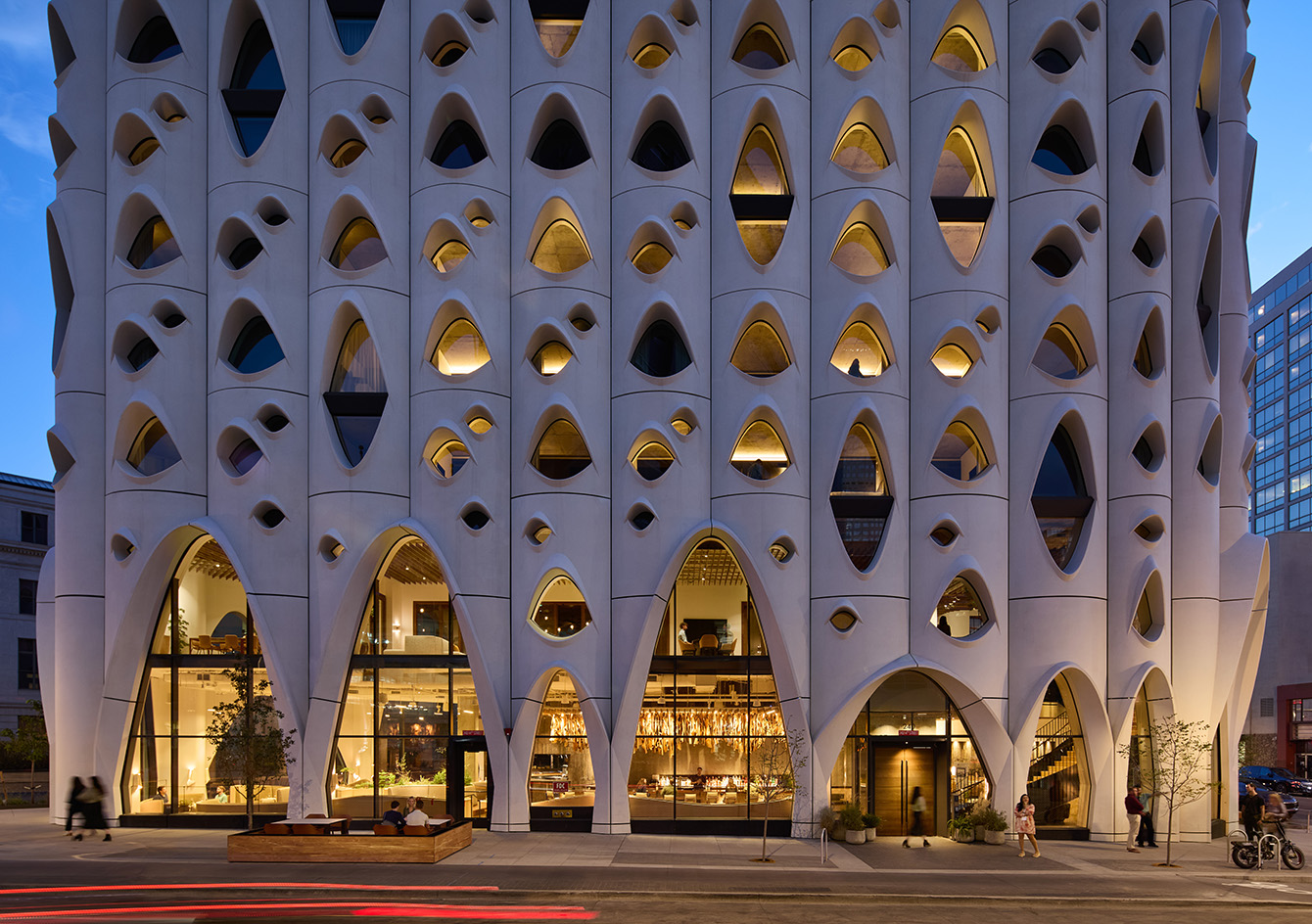
When the architect behind Populus, Jeanne Gang, joined Grant McCargo for a hike in the Colorado aspen forests, a few things just made sense. 'We had a real love of nature in common and a concern about the environment,' Gang says. 'You could see in their previous work attention to natural materials and a sustainable approach.'
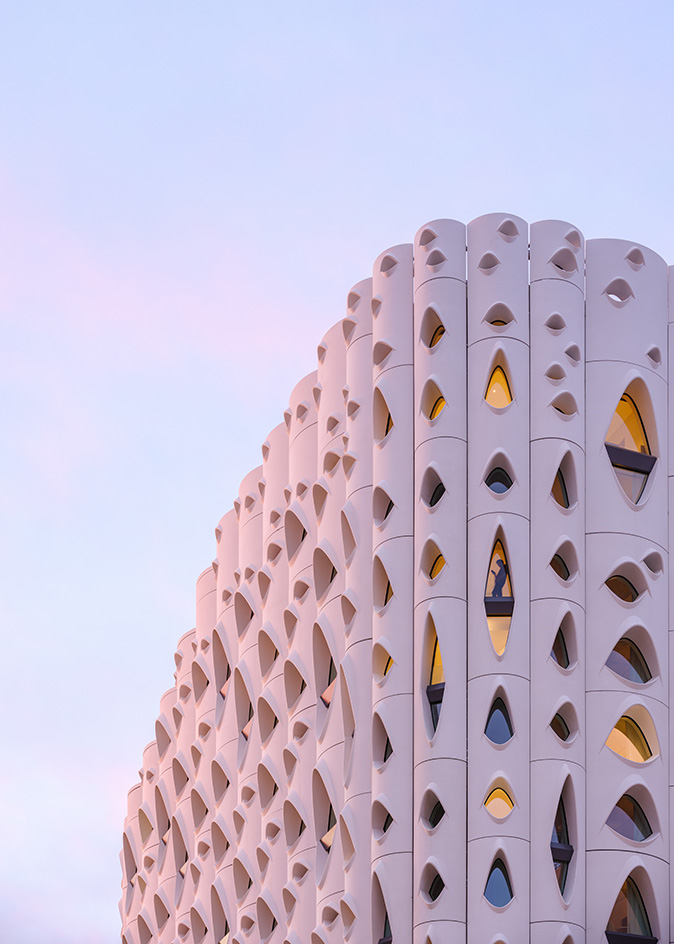
Populus by Studio Gang: rooted in nature
The founding partner of Studio Gang was tapped to design a hospitality concept that McCargo and his team at Urban Villages, an environmentalist property development firm, were eager to break ground on. The location they had earmarked for the project was a prominent, if peculiar, triangular site in downtown Denver. At one time, it was the location of Colorado’s first gas station.
Urban Villages’ holistic modus operandi often results in biophilic buildings that become examples of environmental stewardship. It aligns perfectly with Studio Gang’s organic aesthetic and ability to sculpt structures into gently curved forms that borrow from nature’s deceptive simplicity – as also seen in the renowned Chicago-based architectural practice’s previous projects, such as the Richard Gilder Center for Science, Education and Innovation in New York and the Arkansas Museum of Fine Arts.
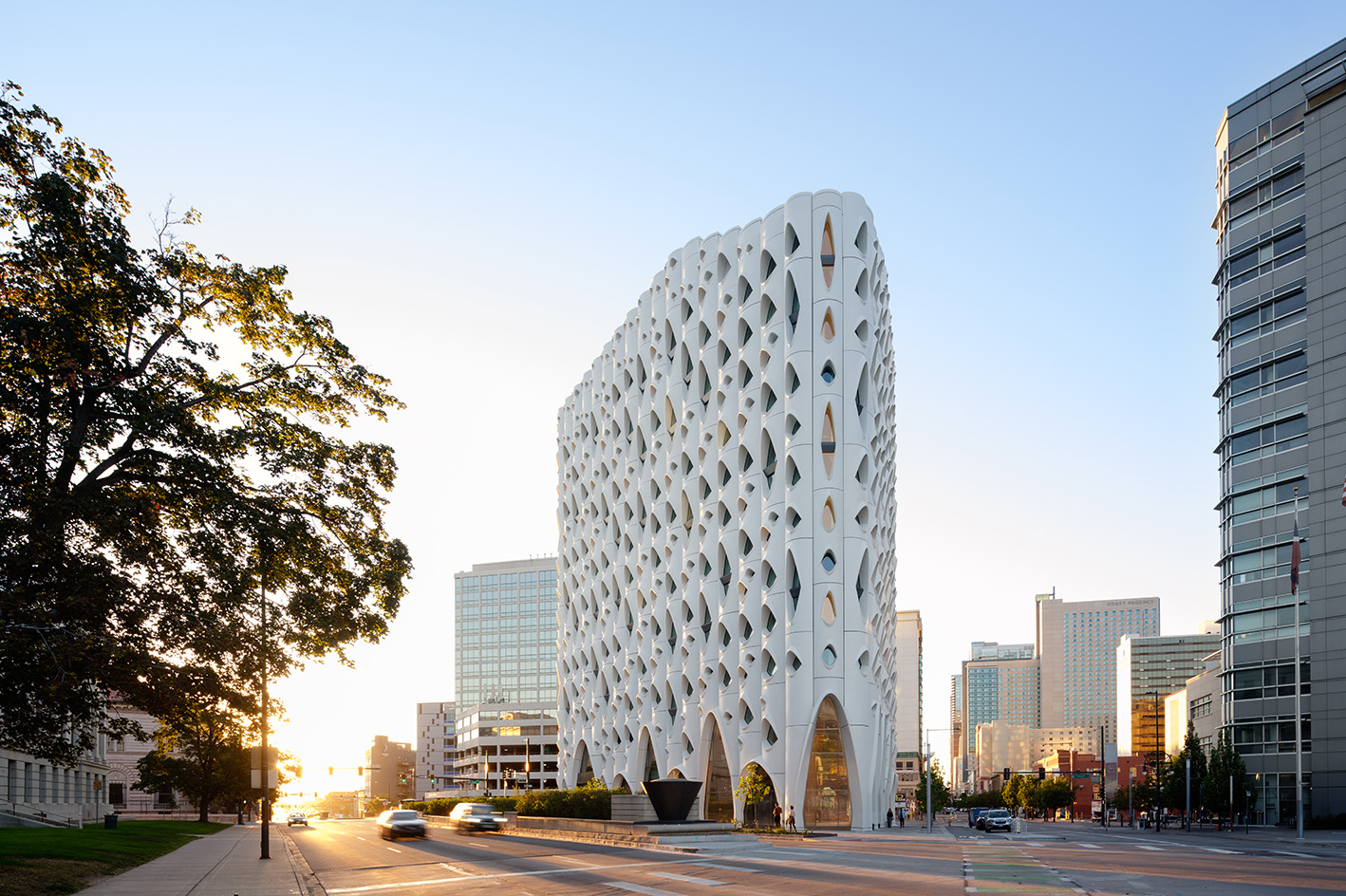
This time around, inspiration was arboreal. While hiking, Gang started to appreciate the white-barked aspen trees, and particularly their striking 'eyes', which are scars resulting from fallen off branches. Studio Gang’s design for Populus, the Latin name for the genus of trees aspen belong to and which became the hotel’s moniker, developed from there.
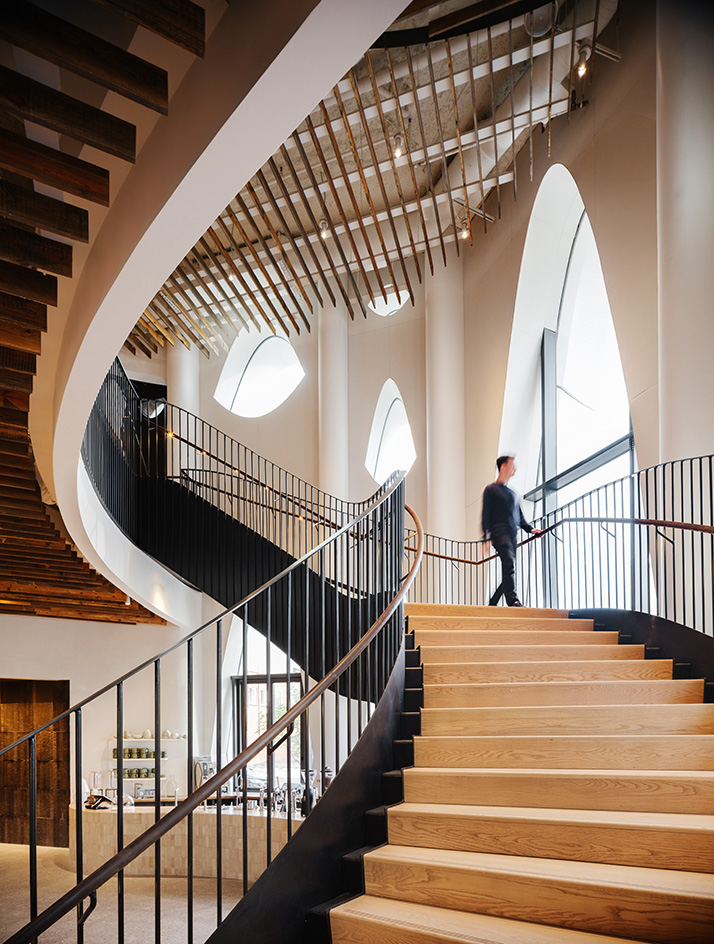
The 13-storey structure resembles 'a cluster of trees with lots of eyes', says Gang of Populus’ striking silhouette and patterned façade. The façade is built from curved panels made of glass fibre-reinforced concrete (GFRC), a mixture with lower embodied carbon developed with leader in innovative and sustainable architecture and building materials Holcim, which accommodate a variety of three-dimensionally shaped window modules that double as rain screens and mimic the shape of the trees' eye-shaped marks.
'You’re able to do a lot more curvatures,' says Gang of the strong, lightweight material. 'That was done off-site, prefabricated by a local company.' In the hands of Studio Gang, the vacant lot’s awkward triangular shape became a boon. 'The aspen eyes frame different elements of the city. Sometimes it’s something spectacular, like the cupola of the State Capitol. Other times, it’s something you wouldn’t normally notice, but because it’s framed, it becomes really interesting', the architect explains.

Sustainability rooted in community
Populus is impactful beyond Denver’s cityscape, too. The hotel is targeting the prestigious LEED Gold Certification and holds the title of first carbon positive hotel in the US – a feat achieved by forgoing traditional heavy-carbon materials, eliminating on-site parking and planting over 70,000 Engelmann Spruce trees (and counting) in Gunnison County, Colorado.
Receive our daily digest of inspiration, escapism and design stories from around the world direct to your inbox.
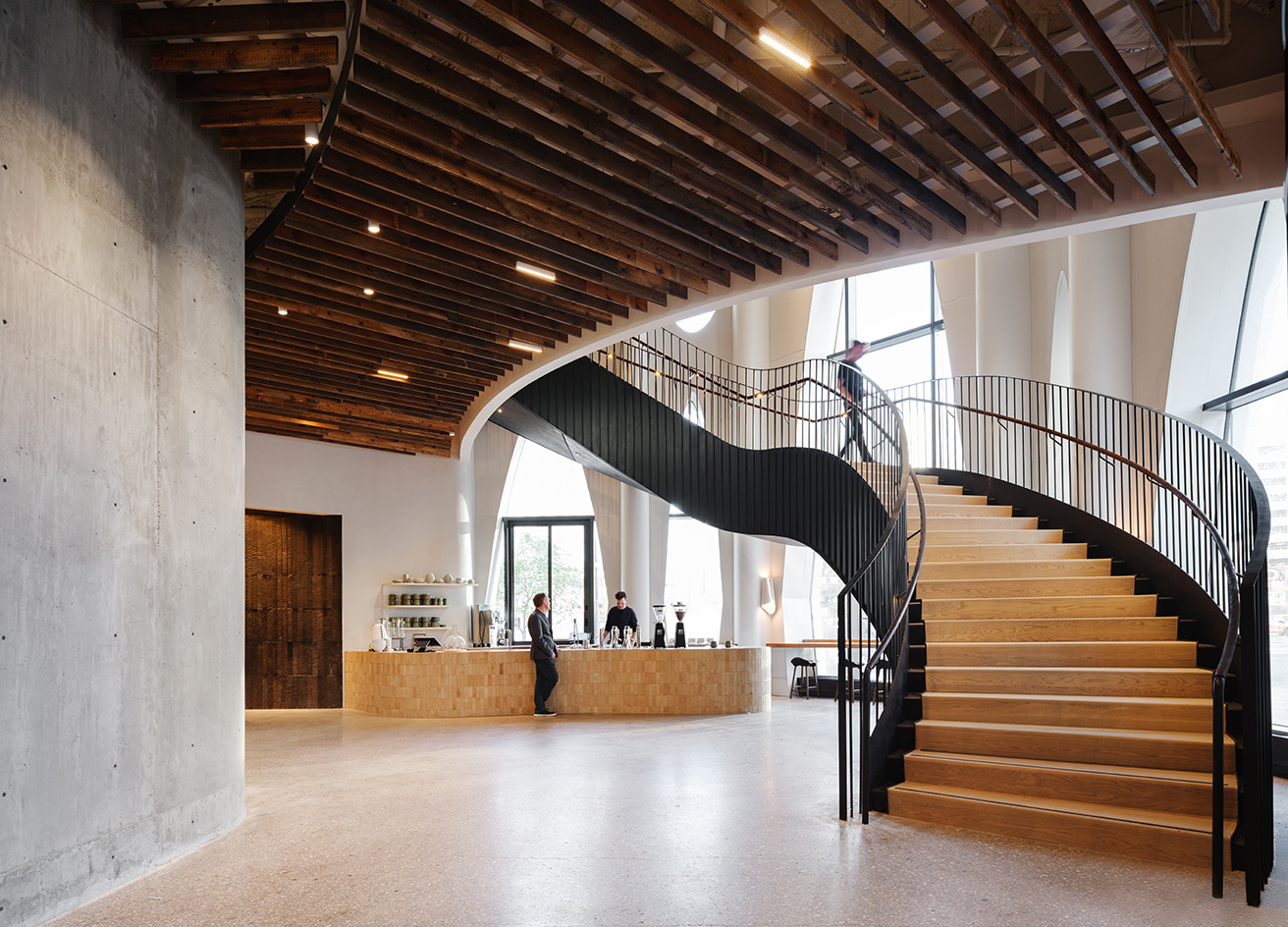
Local materials and makers figure prominently in Populus’ interiors, which were designed by Heather Wildman of Wildman Chalmers and executed in collaboration with Fowler Architecture & Interior Design. 'We created a warm, neutral, cohesive palette of soft greens and browns,' says Wildman of the layers of storytelling that can be found in the textures, objects and materials throughout the hotel’s guestrooms, public spaces and two restaurants.
Reclaimed snow fences from Wyoming add warmth to industrial ceilings; over 500 sheets of Reishi grown from mycelium create a sensory experience above the bar at ground level eatery Pasque; terracotta tiles made of mud from the Platte River grace some of the bar’s surfaces; and in the top floor restaurant Stellar Jay, a Yakisugi-inspired wall adds tactility to the atmosphere. Meanwhile, young Colorado-based practice Superbloom worked on the garden design at the very top.
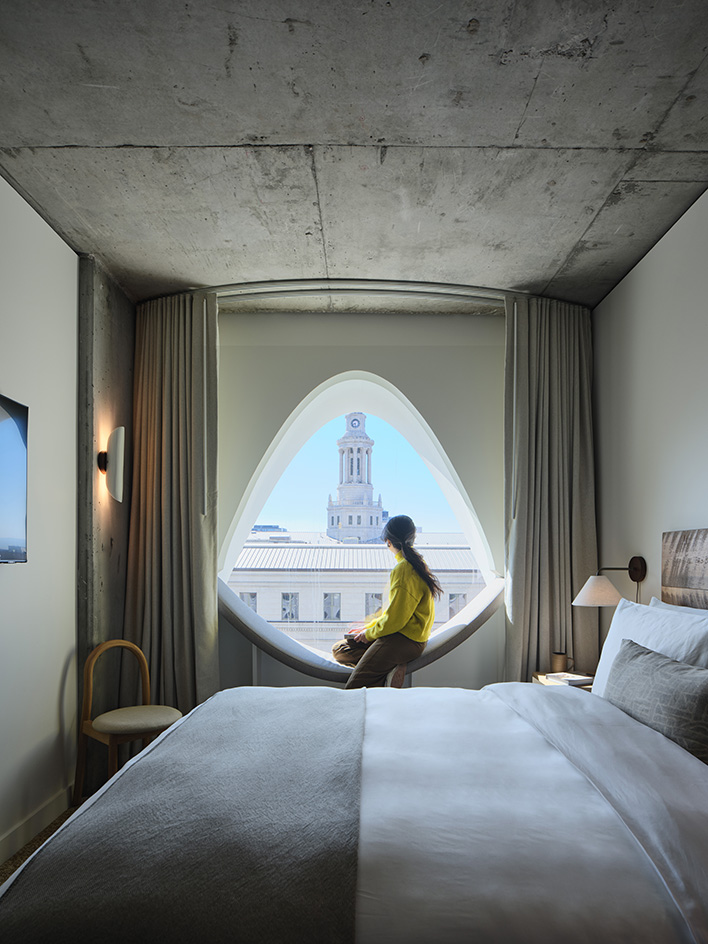
In a departure from the car-oriented nature of American city centres of the past – and in ironic contrast to the site’s original function – Studio Gang decided not to add street-level parking, but instead activate each of the three sides of the building by making it easy for the local community and guests to walk by and hop in. 'This is really a key piece of downtown,' says Gang about the newfound promise of this location. 'And it’s key to the future, bridging the theatre district, Civic Centre Park, Colorado’s State Capital, the Denver Art Museum and the activities on 16th Street. It’s the spot that could start to help connect the dots.'
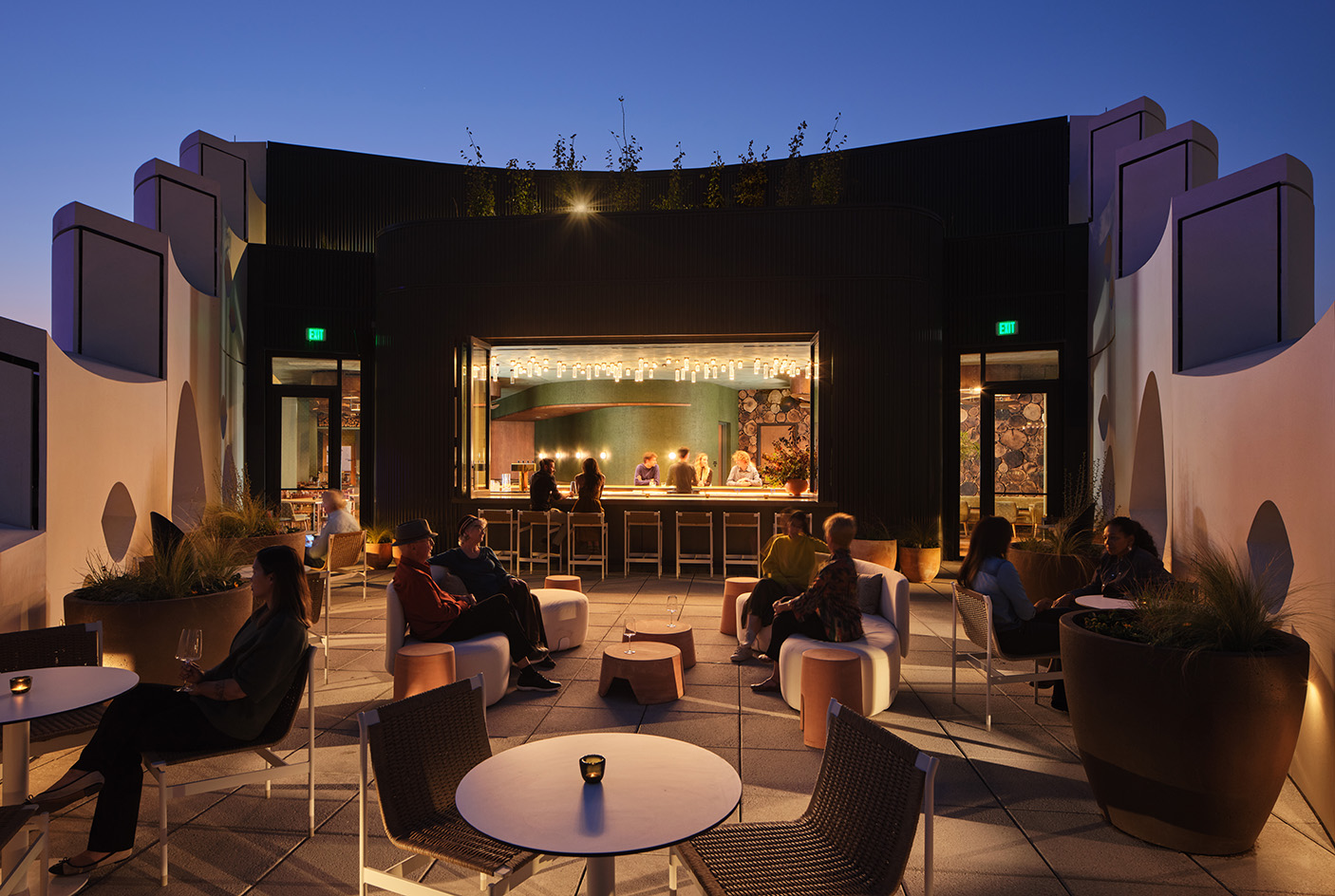
Siska Lyssens has contributed to Wallpaper* since 2014, covering design in all its forms – from interiors to architecture and fashion. Now living in the U.S. after spending almost a decade in London, the Belgian journalist puts her creative branding cap on for various clients when not contributing to Wallpaper* or T Magazine.
-
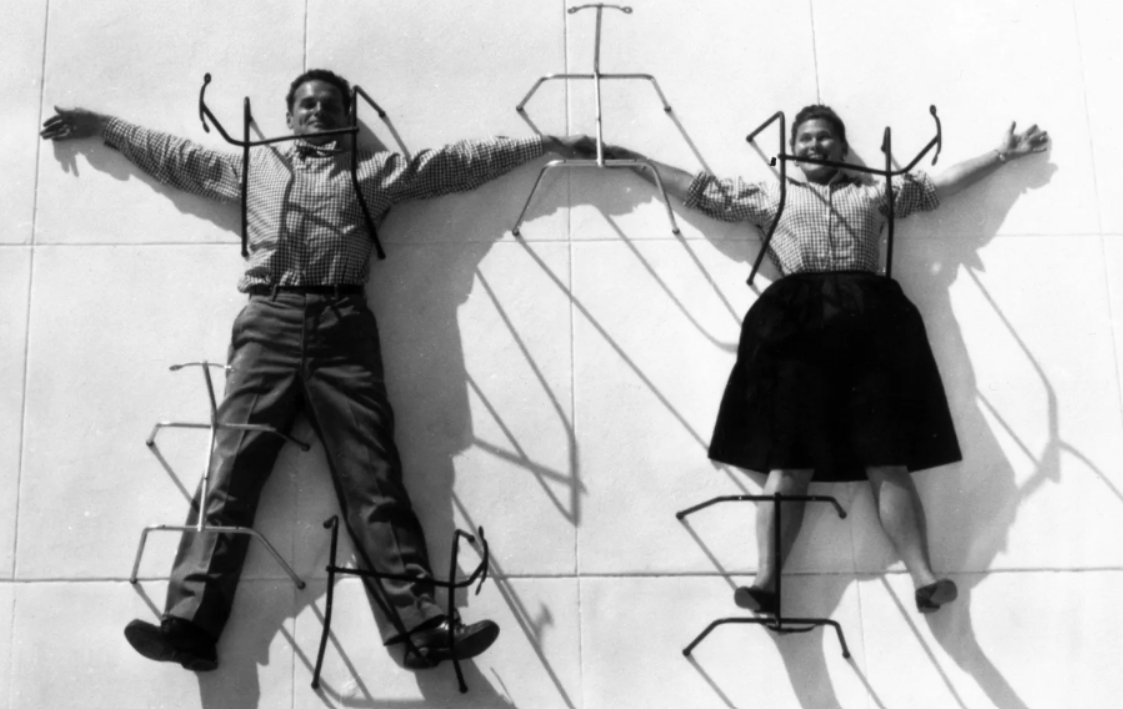 How Charles and Ray Eames combined problem solving with humour and playfulness to create some of the most enduring furniture designs of modern times
How Charles and Ray Eames combined problem solving with humour and playfulness to create some of the most enduring furniture designs of modern timesEverything you need to know about Charles and Ray Eames, the American design giants who revolutionised the concept of design for everyday life with humour and integrity
-
 Why are the most memorable watch designers increasingly from outside the industry?
Why are the most memorable watch designers increasingly from outside the industry?Many of the most striking and influential watches of the 21st century have been designed by those outside of the industry’s mainstream. Is it only through the hiring of external designers that watch aesthetics really move on?
-
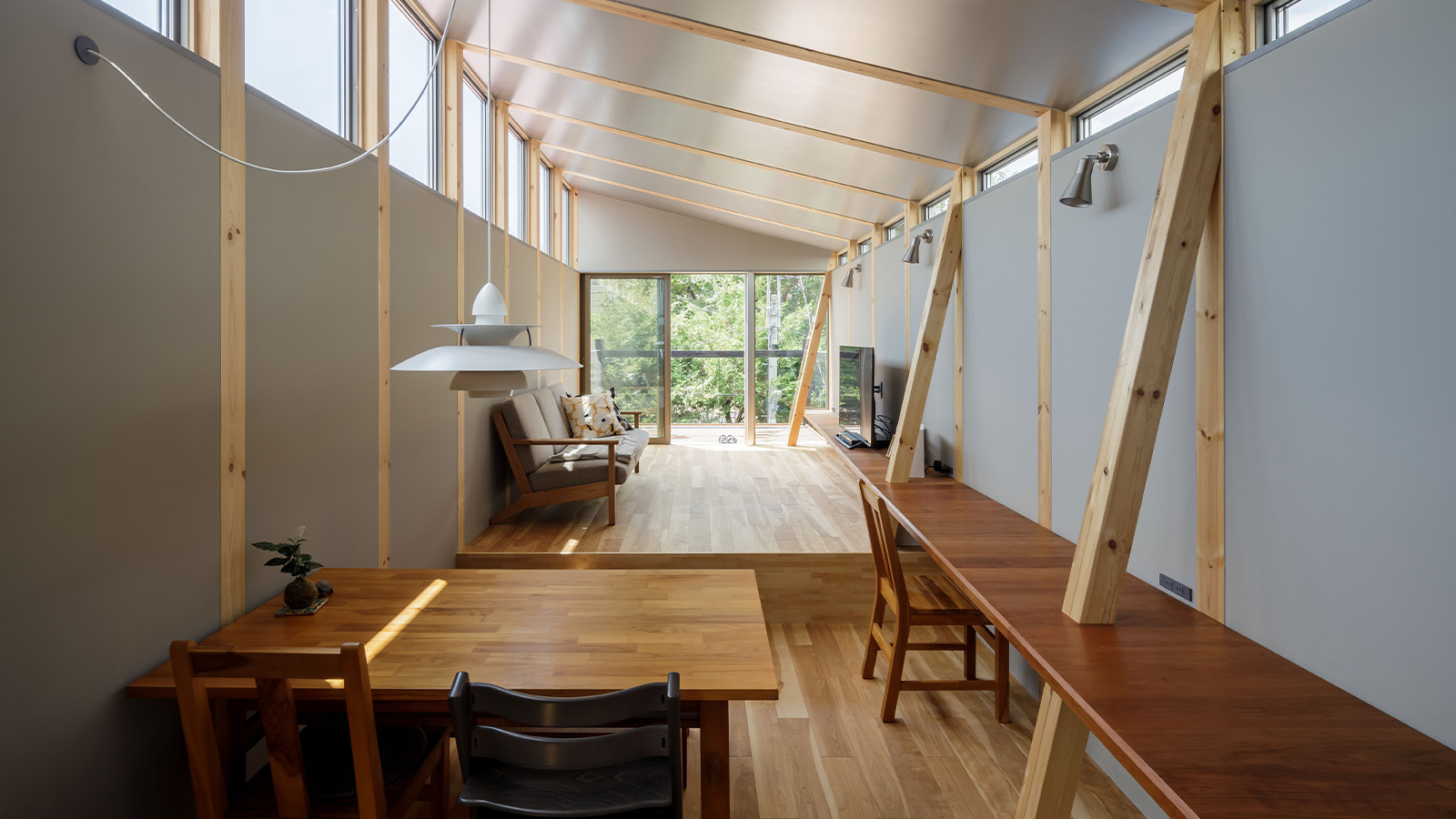 This Fukasawa house is a contemporary take on the traditional wooden architecture of Japan
This Fukasawa house is a contemporary take on the traditional wooden architecture of JapanDesigned by MIDW, a house nestled in the south-west Tokyo district features contrasting spaces united by the calming rhythm of structural timber beams
-
 Step inside this resilient, river-facing cabin for a life with ‘less stuff’
Step inside this resilient, river-facing cabin for a life with ‘less stuff’A tough little cabin designed by architects Wittman Estes, with a big view of the Pacific Northwest's Wenatchee River, is the perfect cosy retreat
-
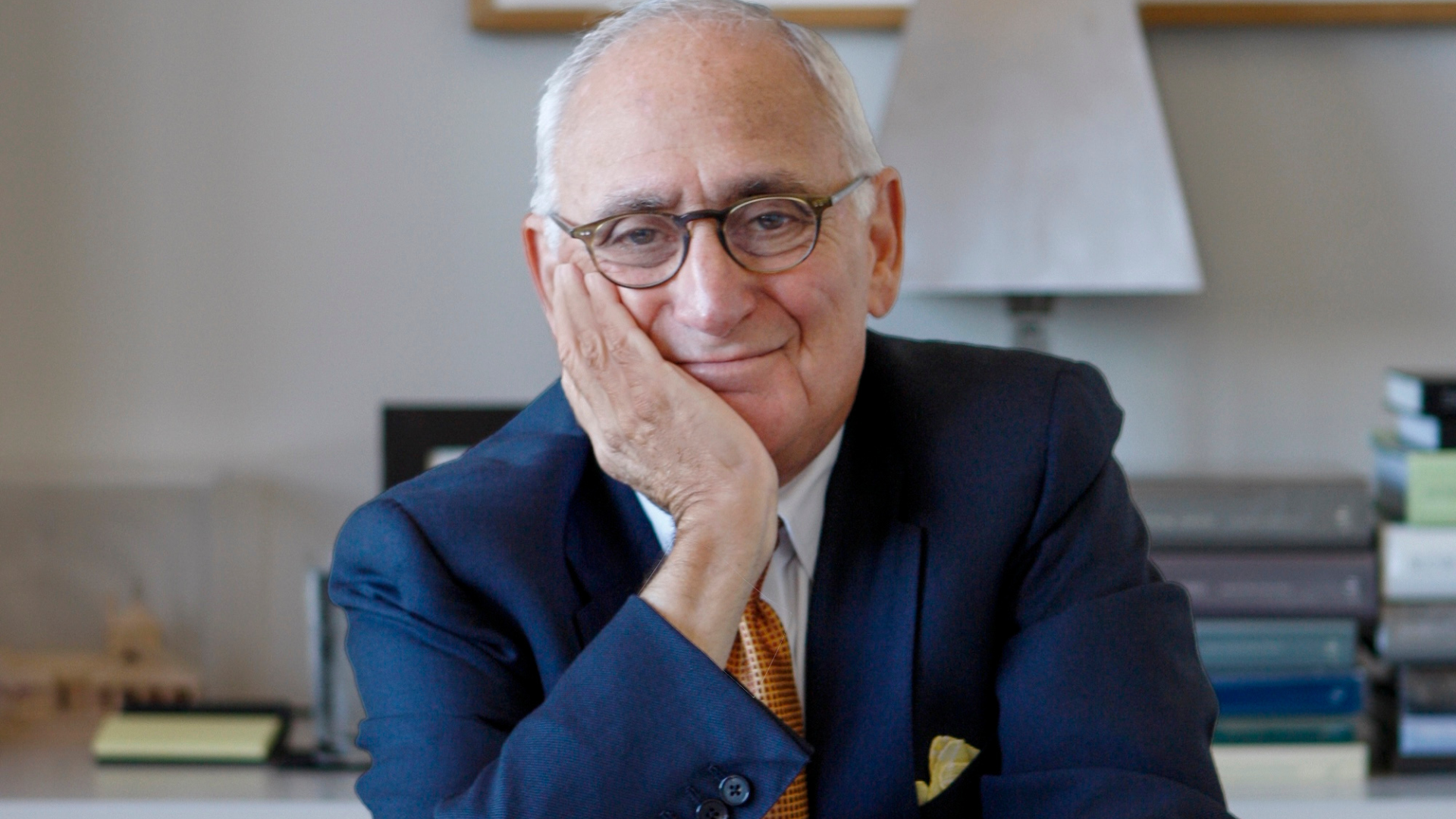 Remembering Robert A.M. Stern, an architect who discovered possibility in the past
Remembering Robert A.M. Stern, an architect who discovered possibility in the pastIt's easy to dismiss the late architect as a traditionalist. But Stern was, in fact, a design rebel whose buildings were as distinctly grand and buttoned-up as his chalk-striped suits
-
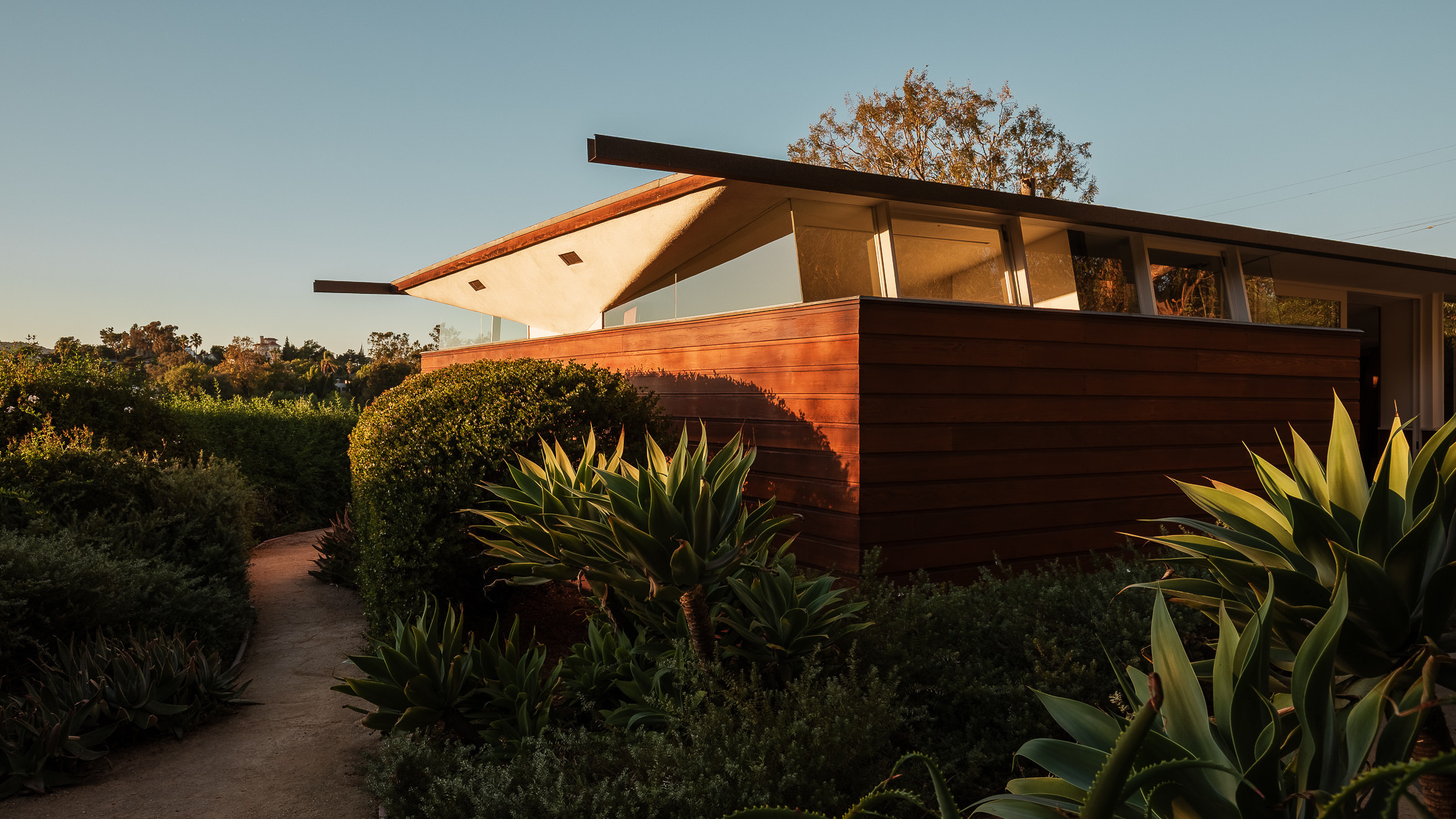 Own an early John Lautner, perched in LA’s Echo Park hills
Own an early John Lautner, perched in LA’s Echo Park hillsThe restored and updated Jules Salkin Residence by John Lautner is a unique piece of Californian design heritage, an early private house by the Frank Lloyd Wright acolyte that points to his future iconic status
-
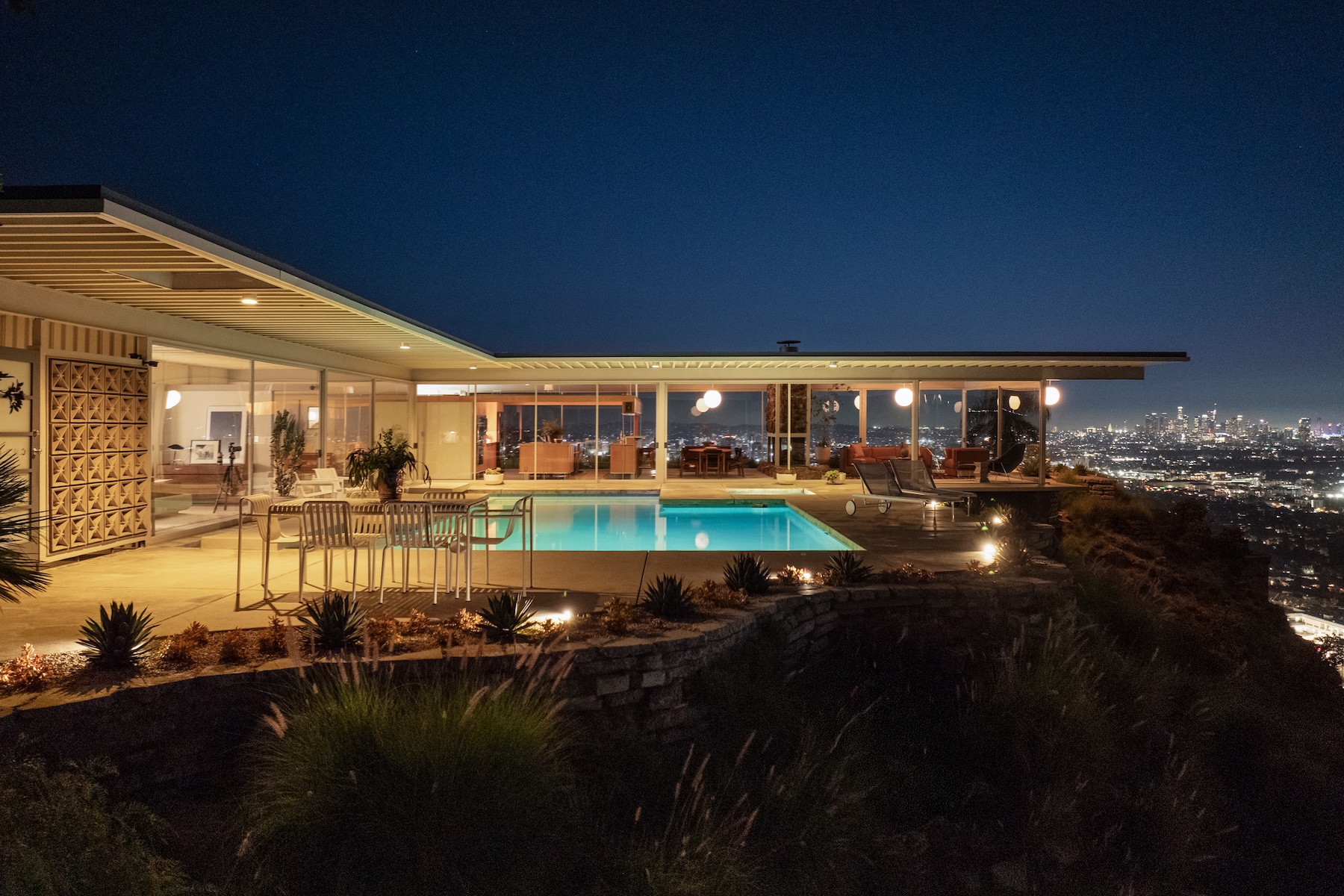 The Stahl House – an icon of mid-century modernism – is for sale in Los Angeles
The Stahl House – an icon of mid-century modernism – is for sale in Los AngelesAfter 65 years in the hands of the same family, the home, also known as Case Study House #22, has been listed for $25 million
-
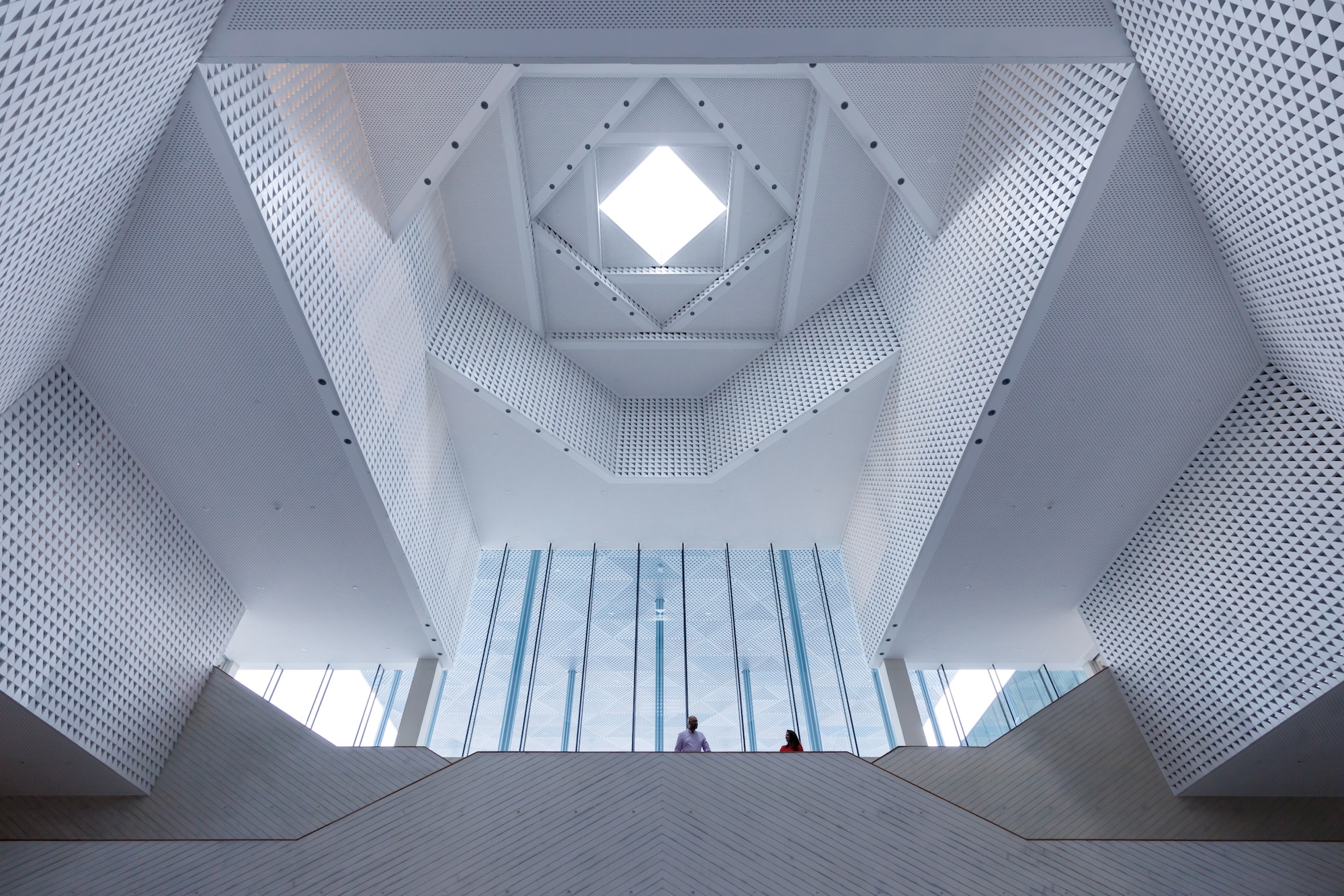 Houston's Ismaili Centre is the most dazzling new building in America. Here's a look inside
Houston's Ismaili Centre is the most dazzling new building in America. Here's a look insideLondon-based architect Farshid Moussavi designed a new building open to all – and in the process, has created a gleaming new monument
-
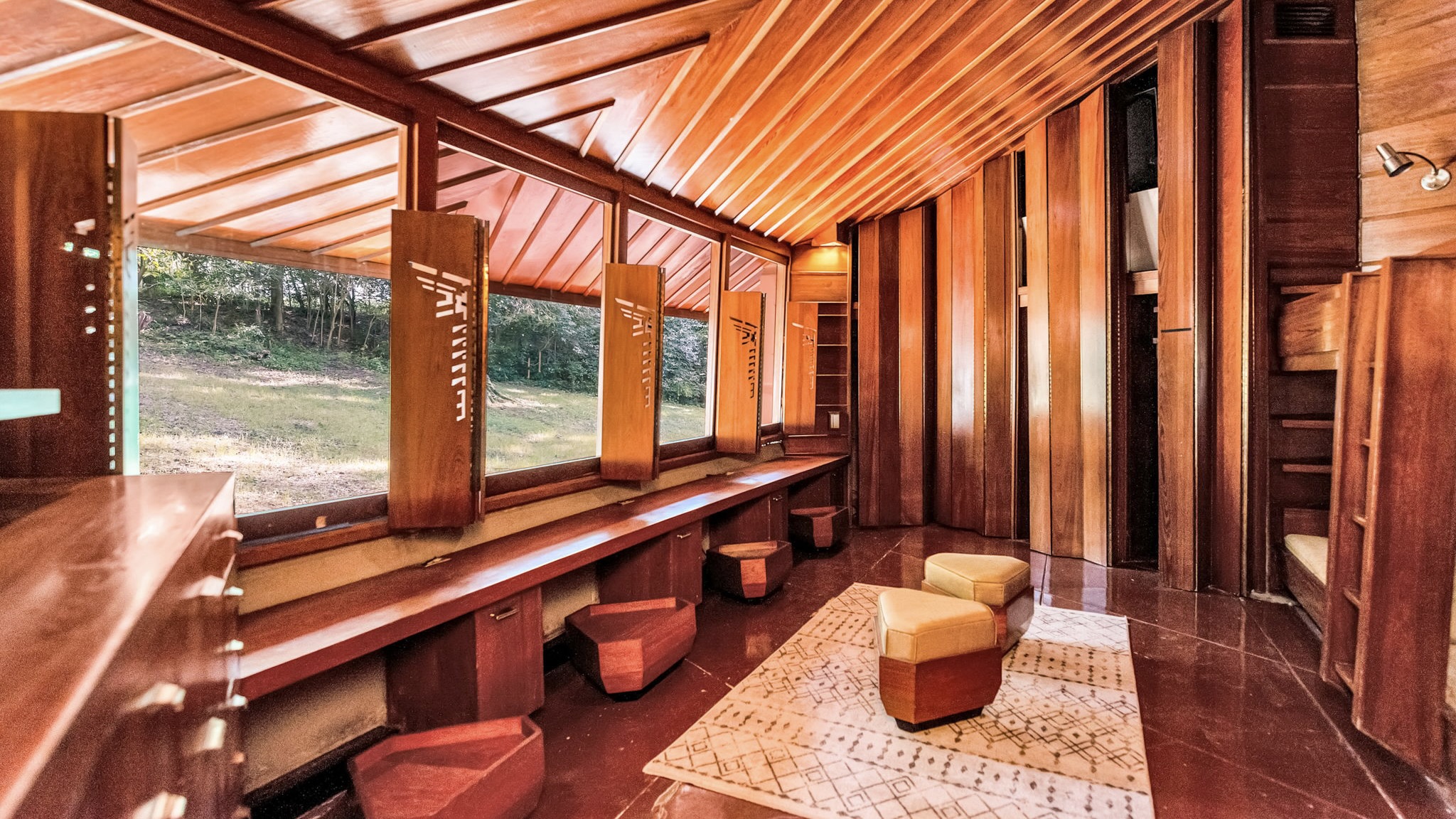 Frank Lloyd Wright’s Fountainhead will be opened to the public for the first time
Frank Lloyd Wright’s Fountainhead will be opened to the public for the first timeThe home, a defining example of the architect’s vision for American design, has been acquired by the Mississippi Museum of Art, which will open it to the public, giving visitors the chance to experience Frank Lloyd Wright’s genius firsthand
-
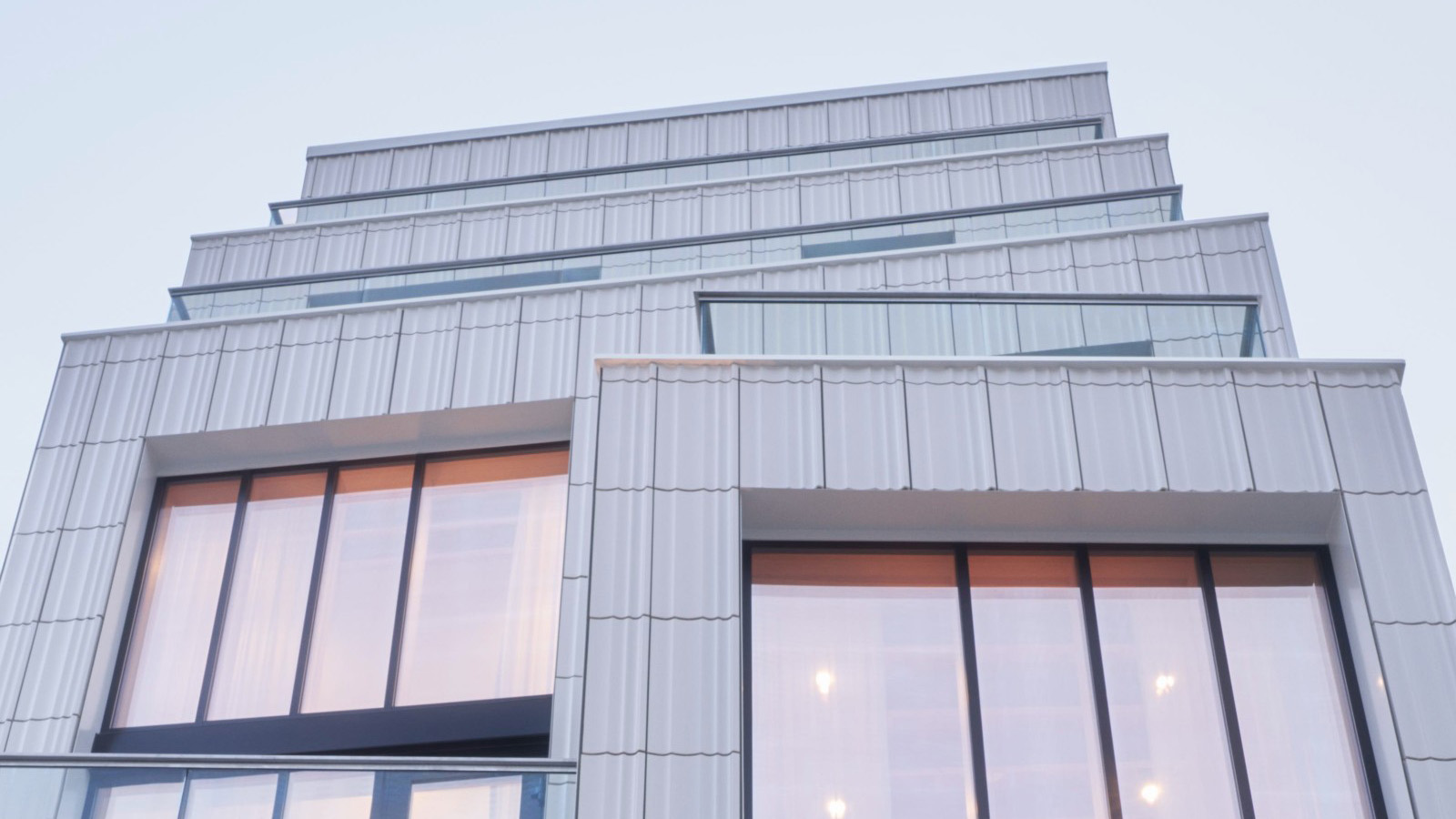 Clad in terracotta, these new Williamsburg homes blend loft living and an organic feel
Clad in terracotta, these new Williamsburg homes blend loft living and an organic feelThe Williamsburg homes inside 103 Grand Street, designed by Brooklyn-based architects Of Possible, bring together elegant interiors and dramatic outdoor space in a slick, stacked volume
-
 This ethereal Miami residence sprouted out of a wild, jungle-like garden
This ethereal Miami residence sprouted out of a wild, jungle-like gardenA Miami couple tapped local firm Brillhart Architecture to design them a house that merged Florida vernacular, Paul Rudolph and 'too many plants to count’